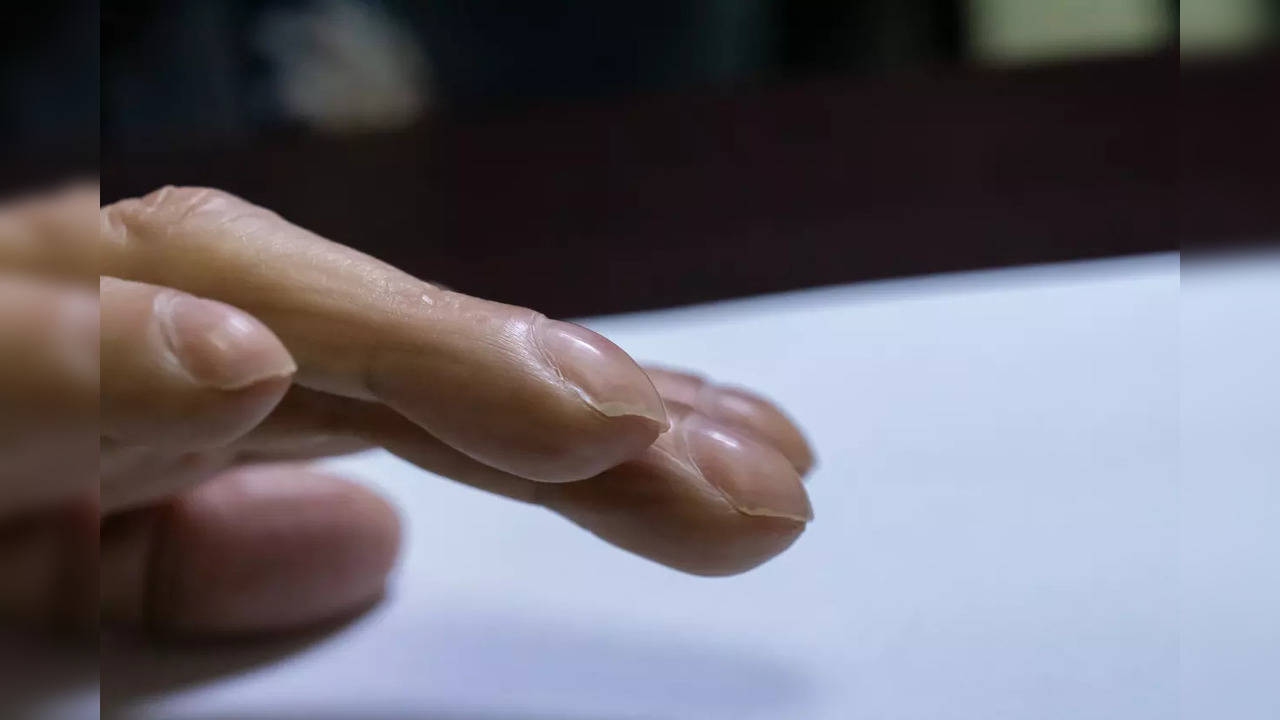THIS is how lung cancer symptoms can show up on your fingernails: UK doctor
If only, is a regular cancer regret. If only we could have spotted cancer early enough. Here is a sign of lung cancer that may appear on your nail.

Sign of advanced lung cancer: Nail clubbing
Photo : iStock
KEY HIGHLIGHTS
- Most cancers if caught early can be successfully treated.
- The reason why early diagnosis is tough in many cases is that most of us do not know what signs to look for.
- Take a look at this unusual feature which is a sign and symptom of likely lung cancer.
Lung cancer is a form of cancer that may begin with the lungs but spreads to other organs fairly quickly. But like most cancers, if one can detect the tumours in the lungs early, it improves your odds of survival, reports Adam Chapman in Express.co.uk.
Sadly, since the lung is an internal organ, you cannot see the tumours grow as one would if it were on the skin, and there are usually no signs or symptoms in the early stages of lung cancer.
The Express article quotes Doctor Amir who is a part of ITV's Good Morning Britain, as saying that any "unexplained changes" that last for three weeks or more should be investigated.
Signs and symptoms on the hands:
- Have your nails begun to look different, especially in their shape?
- Are the fingers and fingernails showing clubbing, digital clubbing?
- Finger clubbing usually affects the top of the fingers on both hands.
- It can also show up on your toes.
According to Compassocology.com, "Finger clubbing associated with advanced lung cancer may cause extra areas of bone to form along the finger joints and wrists. Clubbing is one of several symptoms caused by substances (such as hormones or proteins) secreted by cancer cells." According to Cancer Research UK, "Finger clubbing generally takes years to develop. But it can happen quicker in certain conditions such as a lung abscess."
Why and how does finger clubbing happen?
- According to Mount Sinai Hospital, here's a list of signs and symptoms and an explanation of how finger-clubbing happens:
- The nail beds soften. The nails may seem to "float" instead of being firmly attached.
- The nails form a sharper angle with the cuticle.
- The last part of the finger may appear large or bulging. It may also be warm and red.
- The nail curves downward so it looks like the round part of an upside-down spoon.
Are all finger-clubbing cases indicative of lung cancer?
Not necessarily. According to a research study by doctors from the PGMER Pondicherry and Indira Gandhi Medical College Shimla, "Clubbing has been reported in few endocrine conditions: Thyroid acropachy, hyperparathyroidism. Thyroid acropachy is an extra-thyroidal manifestation of autoimmune thyroid disease and is frequently associated with dermopathy and ophthalmopathy."
Other signs and symptoms of lung cancer:
According to the Centers for Disease Control and Prevention (US-CDC), the other signs indicative of likely lung cancer are:
- Coughing that gets worse or doesn't go away.
- Chest pain.
- Shortness of breath.
- Wheezing.
- Coughing up blood.
- Feeling very tired all the time.
- Weight loss with no known cause.
How to reduce your risk of lung cancer:
- Quit smoking: Don't start in the first place, if you already smoke - then quit at the earliest.
- Stop hanging around when someone else smokes: Avoid secondhand smoke from other people’s cigarettes, cigars, or pipes. Make your home and car smoke-free.
- Be careful at work: Health and safety guidelines in the workplace can help workers avoid carcinogens—things that can cause cancer. To know what products are considered known human carcinogens, check this list.
- Stay away from known carcinogens like asbestos dust, cement dust etc: After the collapse of the World Trade Center (WTC) on 11 September 2001, a dense cloud of dust containing high levels of airborne pollutants covered Manhattan and parts of Brooklyn, New York. Between 60,000 and 70,000 responders were exposed. Many reported adverse health effects. A study by Mount Sinai School of Medicine and Memorial Sloan Kettering (USA) showed that many of these first responders (which included firefighters) went on the develop several forms of lung disease, triggered possibly by the dust of cement and asbestos around the fallen WTC site.
- Get your home tested for Radon: This facility is not easily available in most countries.
What is Radon, Radon testing?
The US Environmental Protection Agency recommends that all homes be tested for radon. Radon is a colourless, odourless radioactive gas that’s produced by decaying uranium. Radon is present in nearly all soils and very low levels of radon gas are found in the air we breathe every day. But this facility and government policy is not uniform across the world.
Trending:
End of Article
Subscribe to our daily Lifestyle Newsletter!
Related News





How To Achieve Hormonal Balance Naturally? 5 Healthy Habits To Adopt

Males Might Be More Likely to Inherit Autism Than Females: Study

Combat Cervical Spondylosis Pain: Effective Exercises To Alleviate Pain

This Personality Test Is Uncannily Correct At Predicting Your Hidden Traits

Limited Sun Exposure To Obesity: Factors That Lower Vitamin D Levels








